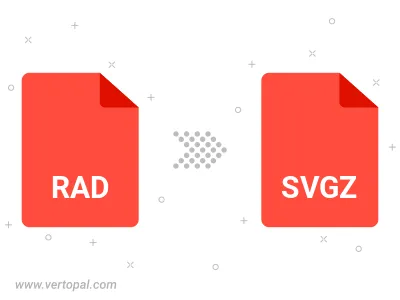Convert RAD to SVGZ
Convert RAD images to SVGZ format, edit and optimize images online and free.

The RAD file extension, associated with the Radiance software suite, stands for Radiance Scene Description. It is used to describe materials and geometry for lighting simulations and rendering programs. Developed by Greg Ward at Lawrence Berkeley National Laboratory, Radiance employs ray tracing and an octree data structure for accurate lighting calculations. RAD files are ASCII text files that must be compiled into an octree before rendering.
SVGZ, or Scalable Vector Graphics Compressed, is a file extension for compressed SVG files, utilizing the GZIP compression method. Introduced to optimize web performance, SVGZ retains the scalability and resolution independence of SVG while reducing file size, leading to faster load times and reduced bandwidth usage. This format is particularly valuable in web development, digital graphics, and applications requiring efficient transmission and rendering of vector graphics. SVGZ emerged as part of efforts to enhance web technologies, catering to the increasing demand for high-quality, scalable visuals in a more efficient manner.
Drag & drop any RAD file from your device or click the Choose File button to proceed.
Use any available convert tools on the preview page, and click Convert.
Wait a couple of seconds for the converter to do the hard job, then download your SVGZ file.

To change RAD format to SVGZ, upload your RAD file to proceed to the preview page. Use any available tools if you want to edit and manipulate your RAD file. Click on the convert button and wait for the convert to complete. Download the converted SVGZ file afterward.
Follow steps below if you have installed Vertopal CLI on your macOS system.
cd to RAD file location or include path to your input file.Follow steps below if you have installed Vertopal CLI on your Windows system.
cd to RAD file location or include path to your input file.Follow steps below if you have installed Vertopal CLI on your Linux system.
cd to RAD file location or include path to your input file.